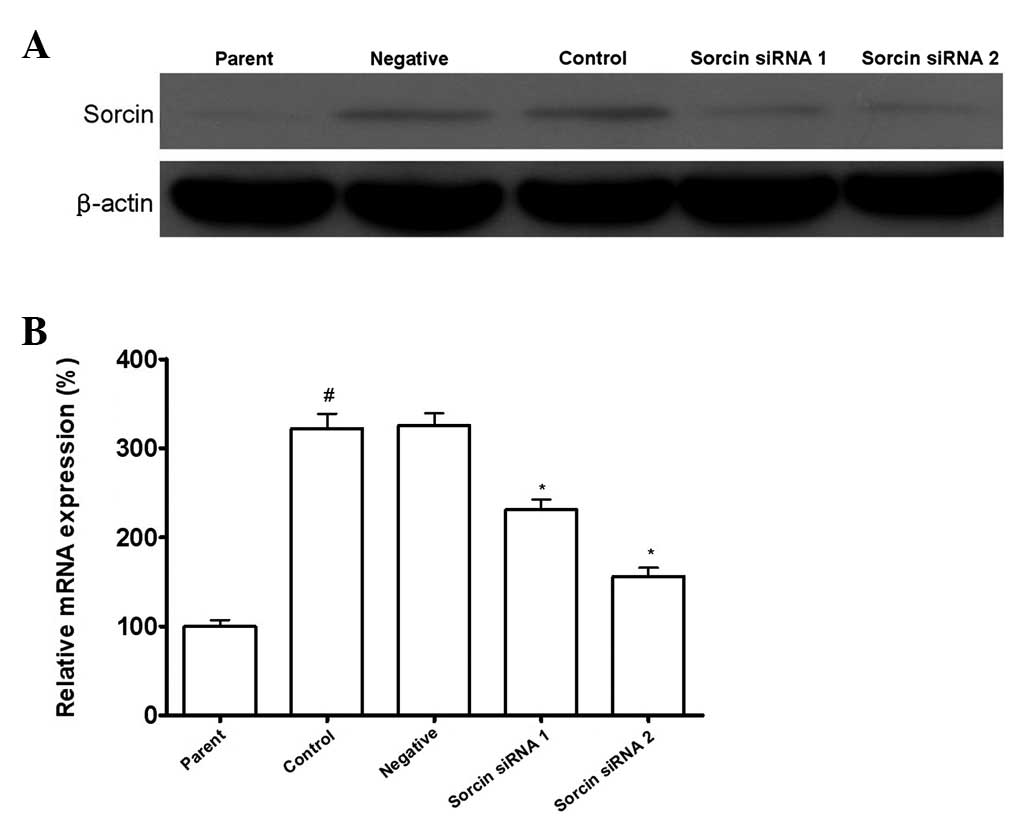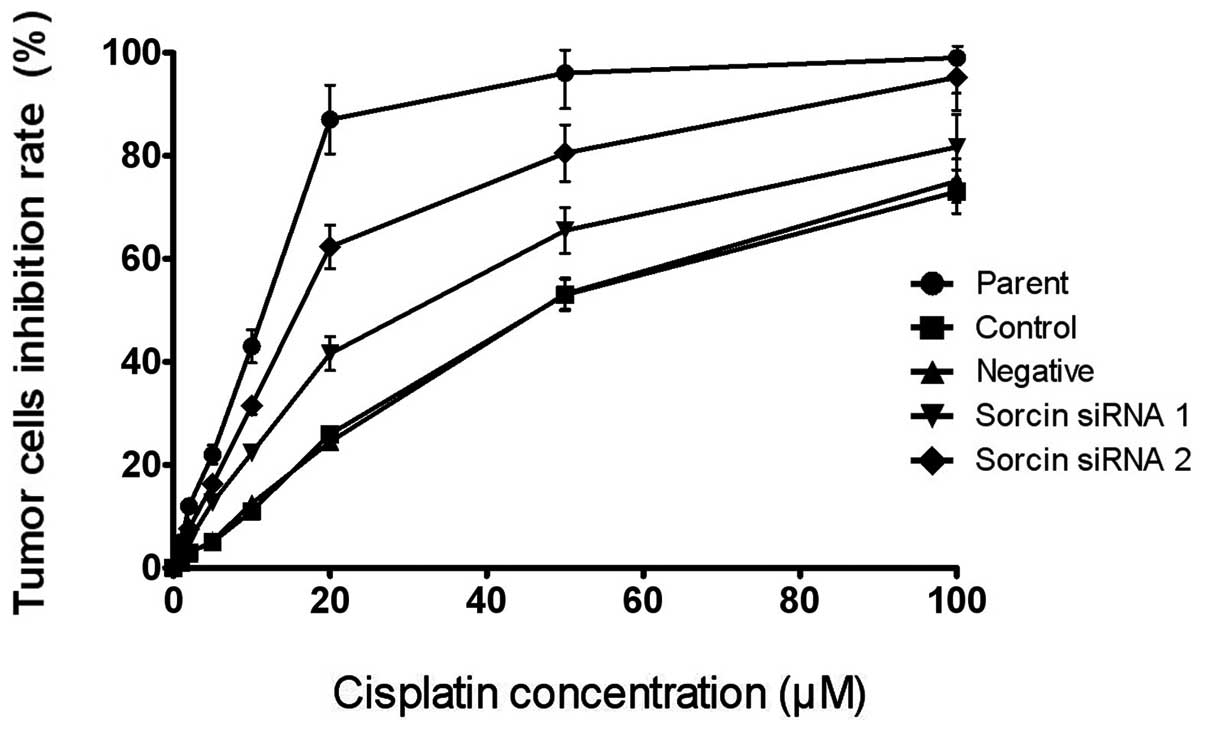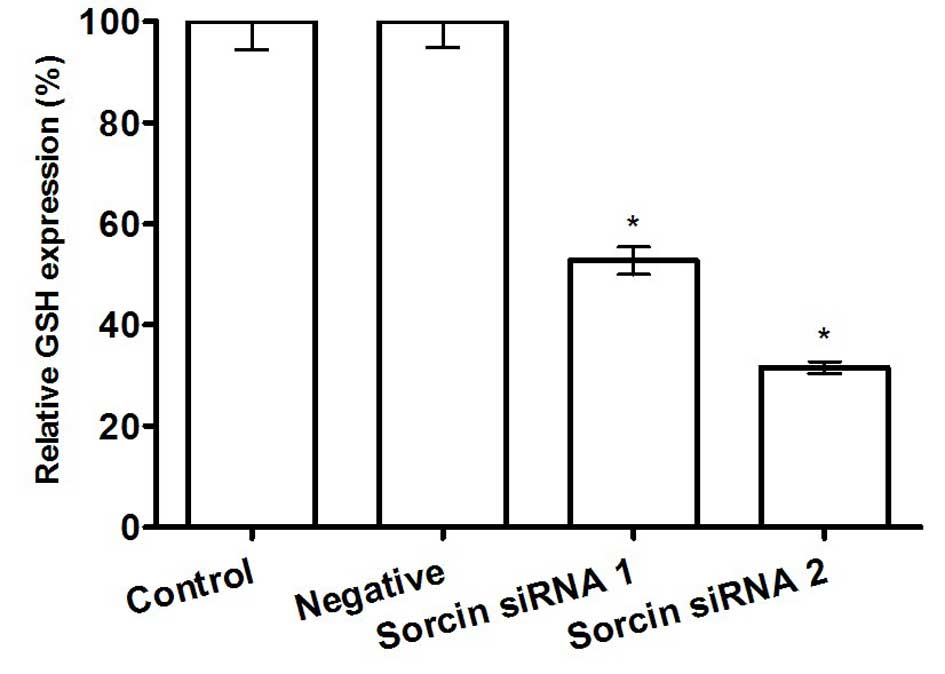|
1
|
Sereno M, Rodríguez-Esteban I,
Gómez-Raposo C, et al: Lung cancer and peritoneal carcinomatosis.
Oncol Lett. 6:705–708. 2013.PubMed/NCBI
|
|
2
|
Chung AS, Wu X, Zhuang G, et al: An
interleukin-17-mediated paracrine network promotes tumor resistance
to anti-angiogenic therapy. Nat Med. 19:1114–1123. 2013. View Article : Google Scholar : PubMed/NCBI
|
|
3
|
Sadava D and Kane SE: Silibinin reverses
drug resistance in human small-cell lung carcinoma cells. Cancer
Lett. 339:102–106. 2013. View Article : Google Scholar : PubMed/NCBI
|
|
4
|
Li X, Wang J, Liu J, et al: Engagement of
soluble resistance-related calcium binding protein (sorcin) with
foot-and-mouth disease virus (FMDV) VP1 inhibits type I interferon
response in cells. Vet Microbiol. 166:35–46. 2013. View Article : Google Scholar : PubMed/NCBI
|
|
5
|
Hu Y, Li S, Yang M, et al: Sorcin
silencing inhibits epithelial-to-mesenchymal transition and
suppresses breast cancer metastasis in vivo. Breast Cancer Res
Treat. 143:287–299. 2014. View Article : Google Scholar
|
|
6
|
Li GY, Liu JZ, Zhang B, et al: Tegillarca
granosa extract Haishengsu (HSS) suppresses expression of mdr1,
BCR/ABL and sorcin in drug-resistant K562/ADM tumors in mice. Adv
Med Sci. 58:112–117. 2013. View Article : Google Scholar : PubMed/NCBI
|
|
7
|
Maddalena F, Laudiero G, Piscazzi A, et
al: Sorcin induces a drug-resistant phenotype in human colorectal
cancer by modulating Ca(2+) homeostasis. Cancer Res.
71:7659–7669. 2011. View Article : Google Scholar : PubMed/NCBI
|
|
8
|
Landriscina M, Laudiero G, Maddalena F, et
al: Mitochondrial chaperone Trap1 and the calcium binding protein
Sorcin interact and protect cells against apoptosis induced by
antiblastic agents. Cancer Res. 70:6577–6586. 2010. View Article : Google Scholar : PubMed/NCBI
|
|
9
|
Hu Y, Cheng X, Li S, et al: Inhibition of
sorcin reverses multidrug resistance of K562/A02 cells and
MCF-7/A02 cells via regulating apoptosis-related proteins. Cancer
Chemother Pharmacol. 72:789–798. 2013. View Article : Google Scholar : PubMed/NCBI
|
|
10
|
Qu Y, Yang Y, Liu B, et al: Comparative
proteomic profiling identified sorcin being associated with
gemcitabine resistance in non-small cell lung cancer. Med Oncol.
27:1303–1308. 2010. View Article : Google Scholar
|
|
11
|
Kawakami M, Nakamura T, Okamura N, et al:
Knock-down of sorcin induces up-regulation of MDR1 in HeLa cells.
Biol Pharm Bull. 30:1065–1073. 2007. View Article : Google Scholar : PubMed/NCBI
|
|
12
|
Akazawa Y, Kawaguchi H, Funahashi M, et
al: Effect of interferons on P-glycoprotein-mediated rhodamine-123
efflux in cultured rat hepatocytes. J Pharm Sci. 91:2110–2115.
2002. View Article : Google Scholar : PubMed/NCBI
|
|
13
|
Toner AP, McLaughlin F, Giles FJ, et al:
The novel toluidine sulphonamide EL102 shows pre-clinical in vitro
and in vivo activity against prostate cancer and circumvents MDR1
resistance. Br J Cancer. 109:2131–2141. 2013. View Article : Google Scholar : PubMed/NCBI
|
|
14
|
Tajitsu Y, Ikeda R, Nishizawa Y, et al:
Molecular basis for the expression of major vault protein induced
by hyperosmotic stress in SW620 human colon cancer cells. Int J Mol
Med. 32:703–708. 2013.PubMed/NCBI
|
|
15
|
Keppler D: Multidrug resistance proteins
(MRPs, ABCCs): importance for pathophysiology and drug therapy.
Handb Exp Pharmacol. 201:299–323. 2011. View Article : Google Scholar
|
|
16
|
Zheng BB, Zhang P, Jia WW, Yu LG and Guo
XL: Sorcin, a potential therapeutic target for reversing multidrug
resistance in cancer. J Physiol Biochem. 68:281–287. 2012.
View Article : Google Scholar : PubMed/NCBI
|
|
17
|
Boonstra R, Timmer-Bosscha H, van
Echten-Arends J, et al: Mitoxantrone resistance in a small cell
lung cancer cell line is associated with ABCA2 upregulation. Br J
Cancer. 90:2411–2417. 2004.PubMed/NCBI
|
|
18
|
Noguchi K, Katayama K and Sugimoto Y:
Human ABC transporter ABCG2/BCRP expression in chemoresistance:
basic and clinical perspectives for molecular cancer therapeutics.
Pharmgenomics Pers Med. 7:53–64. 2014.PubMed/NCBI
|
|
19
|
Huang L, Lu Q, Han Y, Li Z, Zhang Z and Li
X: ABCG2/V-ATPase was associated with the drug resistance and tumor
metastasis of esophageal squamous cancer cells. Diagn Pathol.
7:1802012. View Article : Google Scholar : PubMed/NCBI
|
|
20
|
Cuestas ML, Sosnik A and Mathet VL:
Poloxamines display a multiple inhibitory activity of ATP-binding
cassette (ABC) transporters in cancer cell lines. Mol Pharm.
8:1152–1164. 2011. View Article : Google Scholar : PubMed/NCBI
|
|
21
|
Visvader JE and Lindeman GJ: Cancer stem
cells in solid tumours: accumulating evidence and unresolved
questions. Nat Rev Cancer. 8:755–768. 2008. View Article : Google Scholar : PubMed/NCBI
|
|
22
|
Liu Y, Liu JH, Chai K, Tashiro S, Onodera
S and Ikejima T: Inhibition of c-Met promoted apoptosis, autophagy
and loss of the mitochondrial transmembrane potential in
oridonin-induced A549 lung cancer cells. J Pharm Pharmacol.
65:1622–1642. 2013. View Article : Google Scholar : PubMed/NCBI
|
|
23
|
Kohsaka S, Takahashi K, Wang L, et al:
Inhibition of GSH synthesis potentiates temozolomide-induced
bystander effect in glioblastoma. Cancer Lett. 331:68–75. 2013.
View Article : Google Scholar
|
|
24
|
Tang SC, Wu CH, Lai CH, et al: Glutathione
S-transferase mu2 suppresses cancer cell metastasis in non-small
cell lung cancer. Mol Cancer Res. 11:518–529. 2013. View Article : Google Scholar : PubMed/NCBI
|
|
25
|
Paolo M, Assunta S, Antonio R, et al:
Selumetinib in advanced non small cell lung cancer (NSCLC)
harbouring KRAS mutation: endless clinical challenge to KRAS-mutant
NSCLC. Rev Recent Clin Trials. 8:93–100. 2013. View Article : Google Scholar : PubMed/NCBI
|
|
26
|
Dauphin M, Barbe C, Lemaire S, et al:
Vimentin expression predicts the occurrence of metastases in non
small cell lung carcinomas. Lung Cancer. 81:117–122. 2013.
View Article : Google Scholar : PubMed/NCBI
|
|
27
|
Zhao G, Zhang JG, Shi Y, et al: MiR-130b
is a prognostic marker and inhibits cell proliferation and invasion
in pancreatic cancer through targeting STAT3. PLoS One.
8:e738032013. View Article : Google Scholar : PubMed/NCBI
|
|
28
|
Jans R, Mottram L, Johnson DL, et al:
Lysophosphatidic acid promotes cell migration through STIM1- and
Orai1-mediated Ca2+(i) mobilization and NFAT2
activation. J Invest Dermatol. 133:793–802. 2013. View Article : Google Scholar :
|
















